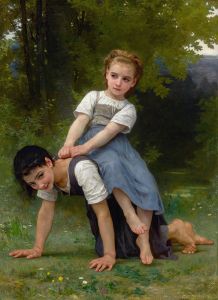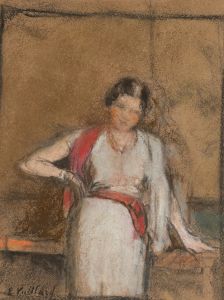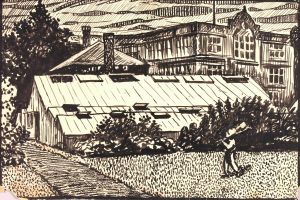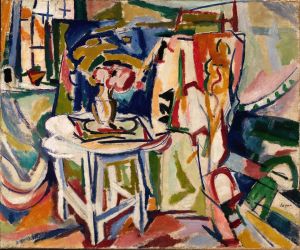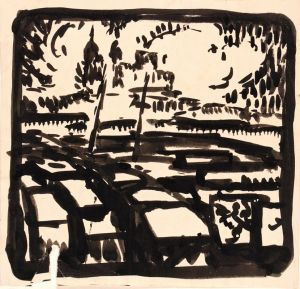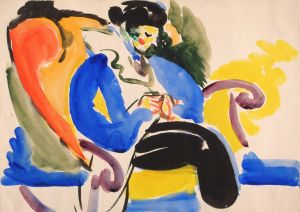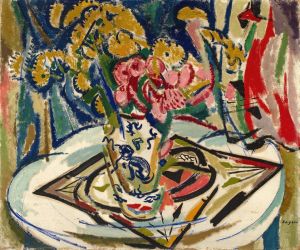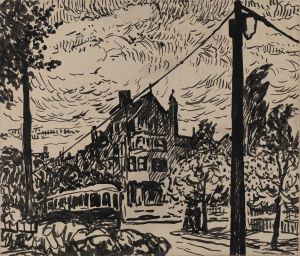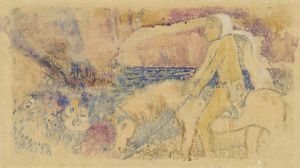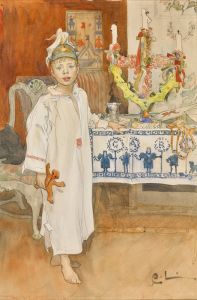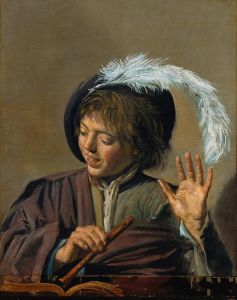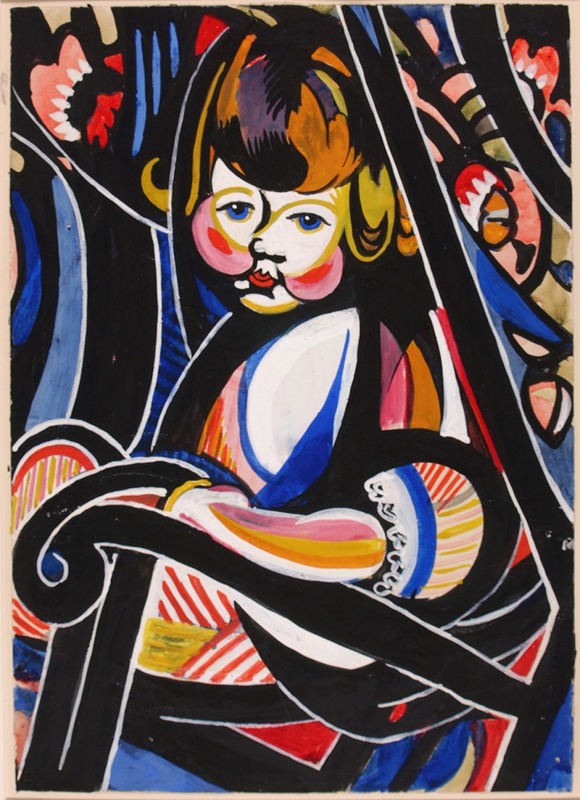
Child in Rocker
A hand-painted replica of Henry Lyman Saÿen’s masterpiece Child in Rocker, meticulously crafted by professional artists to capture the true essence of the original. Each piece is created with museum-quality canvas and rare mineral pigments, carefully painted by experienced artists with delicate brushstrokes and rich, layered colors to perfectly recreate the texture of the original artwork. Unlike machine-printed reproductions, this hand-painted version brings the painting to life, infused with the artist’s emotions and skill in every stroke. Whether for personal collection or home decoration, it instantly elevates the artistic atmosphere of any space.
Henry Lyman Saÿen was an American artist known for his contributions to the early 20th-century art scene. One of his notable works is "Child in Rocker," a painting that exemplifies his unique style and artistic vision. Saÿen, who was born in 1875 in Philadelphia, Pennsylvania, was not only a painter but also an inventor and a scientist. He studied at the University of Pennsylvania and later at the Pennsylvania Academy of the Fine Arts, where he honed his skills in painting.
"Child in Rocker" is a testament to Saÿen's ability to capture intimate and personal moments with a sense of warmth and immediacy. The painting features a young child seated in a rocking chair, a common piece of furniture that evokes a sense of domesticity and comfort. The composition of the painting is both simple and effective, drawing the viewer's attention to the child's expression and posture. Saÿen's use of color and light in the painting is notable, as it highlights the innocence and tranquility of childhood.
Saÿen's style is often associated with the Post-Impressionist movement, which is characterized by a focus on bold colors, distinct brushwork, and an emphasis on geometric forms. In "Child in Rocker," these elements are evident in the way Saÿen uses color to create depth and texture, as well as in the structured composition of the piece. The painting reflects Saÿen's interest in capturing the essence of his subjects, rather than merely replicating their physical appearance.
Throughout his career, Saÿen was influenced by various artistic movements and figures. He spent time in Paris, where he was exposed to the works of leading artists of the time, including Henri Matisse and Pablo Picasso. This exposure had a significant impact on his artistic development, as he began to incorporate elements of Fauvism and Cubism into his work. "Child in Rocker" can be seen as a synthesis of these influences, showcasing Saÿen's ability to blend different styles into a cohesive and personal artistic language.
In addition to his work as a painter, Saÿen was also an accomplished inventor. He held several patents, including one for an X-ray tube, which highlights his diverse talents and interests. This scientific background may have contributed to his analytical approach to art, as he often explored the interplay between form, color, and light in his paintings.
"Child in Rocker" remains an important piece within Saÿen's body of work, as it encapsulates his artistic philosophy and technical skill. The painting is a reflection of his ability to convey emotion and narrative through visual means, making it a valuable contribution to American art history. Saÿen's work continues to be studied and appreciated for its innovative approach and its ability to capture the complexities of human experience.
Overall, "Child in Rocker" is a significant example of Henry Lyman Saÿen's artistic legacy, demonstrating his mastery of color, form, and composition. It stands as a testament to his contributions to the art world and his enduring influence on future generations of artists.





